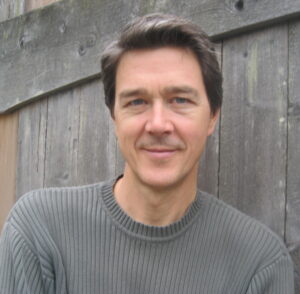By Mark Hertsgaard, Covering Climate Now
On Oct. 4, America met Michael Mann on “60 Minutes,” the country’s most watched and influential TV news programs for nearly 50 years now. A professor at Penn State University, Mann is one of the world’s most eminent climate scientists, and one of the most outspoken.
The “60 Minutes” segment focused on climate change and its connection to both California’s wildfires and the slew of hurricanes that have threatened Florida and other states along the Atlantic and Gulf coasts this year.
After showing the viral clip of Donald Trump telling California state officials that the Earth will “start getting cooler,” correspondent Scott Pelley asked Mann about the president’s additional assertion that “science doesn’t know.”
“The president doesn’t know,” Mann retorted. “And he should know better.”
The geophysicist explained that all of the world’s leading scientific institutions, including the U.S. National Academy of Sciences, had reached a consensus. Mann kept it simple: “There’s about as much scientific consensus about human-caused climate change as there is about gravity.”

In most other countries, such an elementary statement would be unnecessary in a major news outlet. But in the U.S., where only one person in five understands how overwhelming the scientific consensus about climate change is, it makes sense to spell it out.
Covering Climate Now, a global consortium of 400-plus news outlets committed to better coverage of the climate story, where I’m the executive director, was happy to work with our partners at CBS News in developing this “60 Minutes” story.
It was broadcast two days after The Guardian, Covering Climate Now’s lead partner, published a companion interview with Mann, in which he delivered a rarity: game-changing climate news that isn’t depressing.
There has been “a dramatic change in [scientists’] understanding” of the climate system in recent years, Mann said. Humanity, it turns out, may have a bit more time to prevent climate breakdown than previously believed.
Mann is well positioned to explain this shift in scientific understanding. He has published more than 200 peer-reviewed papers, none more famous than the “hockey stick” study that showed that “today’s rate of warming began with the Industrial Revolution.”
Until recently, Mann explained, scientists believed the climate system carried a long lag effect, mainly because carbon dioxide remains in the atmosphere, trapping heat, for many decades after being emitted.
So, even if humanity hypothetically halted all CO2 emissions overnight, global temperatures would continue to rise for 25 to 30 years, driving more storms, sea-level rise and other impacts. Since halting emissions will in fact take at least 25 years under the best of circumstances, humanity seemed locked into at least 50 more years of rising temperatures.
Research over the past 10 years, however, has revised this vision. It turns out, Mann said, that if humans “stop emitting carbon right now … the oceans start to take up carbon more rapidly.” The actual lag effect between halting emissions and halting temperature rise, then, is not 25 to 30 years but “more like three to five years.”
This new science suggests that humanity can actually turn down the heat almost immediately by slashing greenhouse gas emissions.

This new understanding carries enormous implications for climate action everywhere but especially in high-risk areas such as Florida. Sea-level rise will not stop, Mann emphasizes; the Earth’s ice is already melting today after “only” about 2 degrees Fahrenheit of warming, and that melting will continue even if emissions are cut.
Humans can, however, limit the speed and extent of that melting—and thus the speed and extent of sea-level rise—if we take strong, rapid action to shift from fossil fuels to renewable energy, climate-smart agriculture, and more.
Which is why Mann also said in The Guardian interview that a second presidential term for Trump would be “game over” for the climate—a statement, he said, that is not partisan but rather a reflection of the scientific facts.
To prevent a catastrophic rise in global temperature, humanity must cut emissions in half by 2030, Mann said, citing the landmark 2018 report by the UN’s Intergovernmental Panel on Climate Change. At the time, this meant cutting emissions by 5 percent a year.
But if Trump spent four more years pushing the world’s biggest economy in the opposite direction, hitting the 2030 target would become “essentially impossible,” Mann said. Emissions would have to fall by roughly 15 percent a year. By way of comparison, that is twice as much as emissions are projected to fall in 2020 because of coronavirus economic lockdowns. “It just may not be economically possible or socially viable to do it that [fast],” he added.
“The future of this planet is now in the hands of American citizens,” Mann said. And perhaps nowhere do voters have more at stake than in Florida.
Mark Hertsgaard is the environment correspondent for The Nation magazine, the executive director of Covering Climate Now, and the author of books including, HOT: Living Through the Next Fifty Years on Earth.
“The Invading Sea” is the opinion arm of the Florida Climate Reporting Network, a collaborative of news organizations across the state focusing on the threats posed by the warming climate.



